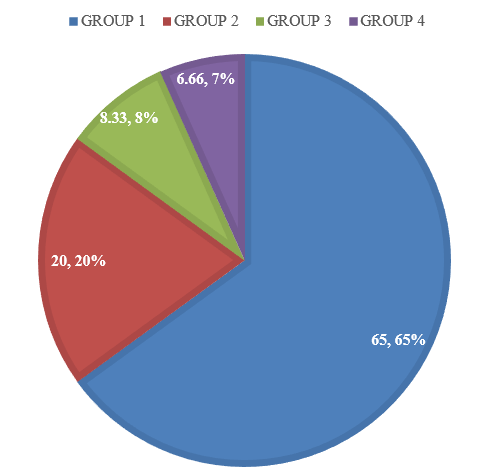Introduction
Diffuse hair fall is one of the most common problem seen in women.
An average normal scalp has about 1,00,000 hairs, with approximately 86% being in anagen (the active growth phase), 1% in catagen (phase of involution), and 13% in telogen (the resting stage). 1 Loss of 100-150 telogen hair is considered as normal.2
Telogen effluvium(TE), whether acute or chronic (i.e. of more than 6 months duration) followed by female pattern hair loss(FPHL) is the most common cause of diffuse hair loss. 3
In both conditions, low iron stores is considered a possible contributing factor, thus assessment of serum ferritin levels is generally recommended as part of the routine investigation.
Under steady-state conditions, serum ferritin levels are the most convenient laboratory test to estimate body iron stores 4 and how well its level correlates with diffuse hair loss is explained in this article.
Iron
Iron is involved in many processes within the hair follicle, suggesting that iron deficiency could disrupt hair synthesis.5
Within cells, iron is stored complexed to protein as ferritin or hemosiderin.
Ferritin is a highly conserved protein complex that plays an important role in iron storage and is recognized as the main iron-binding protein in non-erythroid cells.6
Generally, serum ferritin is directly related to intracellular ferritin and thus to the total body iron stores.7
Stages of Iron Deficiency 8
The progression to iron deficiency can be divided into 3 stages
The first stage is negative iron balance, in which demands for (or losses of) iron exceed the body’s ability to absorb iron from the diet.9 During this period, iron stores as reflected by the serum ferritin level or by the appearance of stainable iron on bone marrow aspirations-decrease. 8
As long as iron stores are present and can be mobilized, the serum iron, total iron binding capacity (TIBC), and red cell protoporphyrin levels remain within normal limits.
At this stage red cell morphology and indices are normal
When iron stores become depleted, the serum iron begins to fall. Gradually, the TIBC increases, as do red cell protoporphyrin levels.
By definition, marrow iron stores are absent when the serum ferritin level is less than 15 microgram/L.
As long as the serum iron remains within the normal range, haemoglobin synthesis is unaffected despite the dwindling iron stores.
Once the transferrin saturation falls to 15-20%, haemoglobin synthesis become impaired. This is a period of iron deficient erythropoiesis. Gradually the haemoglobin begins to fall reflecting iron deficiency anaemia. 8
The most common causes of iron deficiency are menstrual blood loss and pregnancy in premenopausal women. 10
Materials and Methods
Study source
This study was conducted in the Department of Dermatology, Venereology and Leprosy, Shadan Institute of Medical Sciences, Teaching Hospital and Research Center, Hyderabad, Telangana, India from January 2019 to January 2020.
Inclusion criteria
All the consenting female participants of age group 15–45 years, with chronic diffuse hair loss, acute and chronic telogen effluvium.
Data collection
An informed and written consent was obtained from each patient. After eliciting detailed history a complete physical and clinical examination of each patient was carried out and only those fulfilling inclusion criteria were included in the study. Diagnosis of TE/ChronicTE and FPHL was made on clinical examination and by performing hair- pull test.
Results
Here, in this study, based on the serum ferritin levels, the patients are grouped into four categories as follows: 11
Table 1
If we analyse these results percentage wise it can be represented as follows
Discussion
This study was done to evaluate if a correlation exists between the most common causes of diffuse hair loss (including both telogen effluvium and female pattern hair loss) and the levels of serum ferritin. The results show significant low levels of serum ferritin in 65% of the subjects while 20% show an iron depleted state.
Iron deficiency is found to be the most common nutritional deficiency. In premenopausal women, the most common causes of iron deficiency anemia are menstrual blood loss and pregnancy.
Hemoglobin concentration can be used to screen for iron deficiency, whereas serum ferritin concentration can be used to confirm iron deficiency.
Ferritin concentration increase drastically in the presence of infection, inflammation or neoplastic conditions.
The inflammatory response may cause ferritin to migrate from plasma to within cells, in order to deny iron to the infective agent. 12
Many laboratories use serum ferritin concentrations of 10 to 15 ng/mL as the lower limits of normal. This yields only a sensitivity of 59% and a specificity of 99% for diagnosing iron deficiency. Using a cutoff of 41 ng/mL yields a sensitivity of 98% and a specificity of 98% for diagnosing iron deficiency. 13 Dr. Rushton and colleagues cite a study that showed that the calculated 99% confidence limit for bone-marrow iron staining is a serum ferritin level greater than 70 ng/mL. 14
When a patient does not have anemia (ie, the patient has a normal hemoglobin and hematocrit level) but has a serum ferritin concentration less than 70 ng/mL, we call this condition ‘‘nonanemic iron deficiency” 11
Conclusion
Significant relation was detected between decreased tissue iron stores and the most common causes of diffuse hair loss (including both telogen effluvium and female pattern hair loss)
However, further scientific studies with larger sample sizes are required to associate different etiological factors and iron deficiency leading to hair loss.

